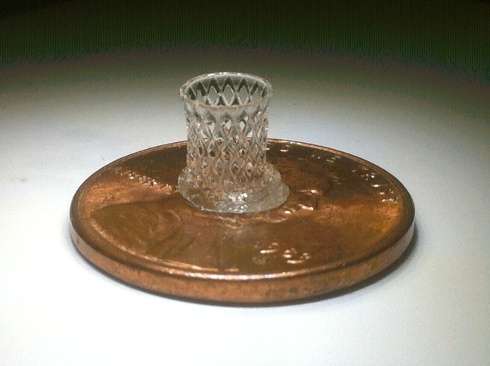Researcher uses high-performance computing to design new materials

Shengfeng Cheng, an assistant professor in the Department of Physics at Virginia Tech, is seeing the unseen.
Through his newly named high-performance computing system, IMAGINE, he is a leader in the emerging trend that aims to design molecules at the atomistic scale to create materials with highly sought after properties.
IMAGINE stands for Innovative Materials discovery Accelerated through a Genomics and Informatics Engine.
Cheng's system is in line with President Obama's Materials Genome Initiative, which aims to expedite the time it takes to find a new material via bypassing the laborious trial-and-error method.
Through the effort, the system was created as a computational engine devoted to materials modeling.
"Computation can auto-rule out a thousand structural combinations before a single wet-lab experiment is even run," Cheng said. "Infinite possibilities—that's what we compute."
By first running simulations to determine the best design for a structure, Cheng is accelerating the pace of discovery by avoiding the trial and error.
Working alongside materials expert Christopher Williams, an assistant professor with the Department of Mechanical Engineering and the Department of Engineering Education, and Timothy Long, an associate professor in the Department of Chemistry, Cheng is well-positioned to help Virginia Tech become a leader in materials genomics, university leaders say.
"IMAGINE is the university's first high-performance computing resource dedicated exclusively to materials by design; the Institute for Critical Technology and Applied Science is excited to contribute to the continued growth and use of this resource on the Virginia Tech campus and beyond," said Matthew Hull, program manager of the institute's Nanoscale Science and Engineering Thrust that is assisting Cheng in the development of the system. "IMAGINE will connect our faculty working at the interfaces of physics, chemistry, computation, materials science and engineering, and advanced manufacturing in a truly unique way."
"This is exactly the kind of interdisciplinary research our institute encourages," said Roop Mahajan, director of the Institute for Critical Technology and Applied Science. "We are proud to support this new IMAGINE system and confident that it will streamline the process for designing new materials."
Cheng and his team work on the level of atoms, testing the effects of different sequences of charges on a polymer chain and watching the way water molecules move around an ion or a protein.
Cheng and Long are currently trying to make membranes of charged polymers that can be widely used for water purification and ion conduction.
"The molecular resolution inherent in our computation models is critical," Cheng explained. "For example, if we begin to understand at the molecular scale why and how things like microtubules, a fascinating natural supramolecular polymer in our cells, grow and shrink in response to external stimuli, we are then able to develop effective anti-cancer drugs using them as targets; the same understanding will also inspire us to design smart, adaptive, stimuli-responsive materials that can self-assemble and self-heal."
Cheng hopes to transition accidental discoveries and serendipitous science into a predictive practice where one can see all of the hypothetical possibilities beforehand, and zero in on exactly what's needed.
Provided by Virginia Tech





















